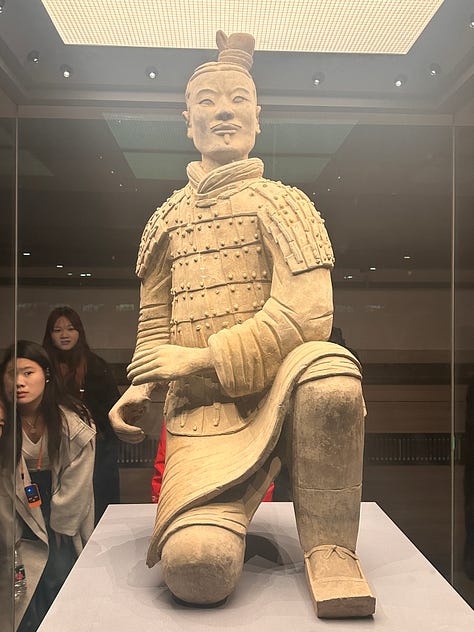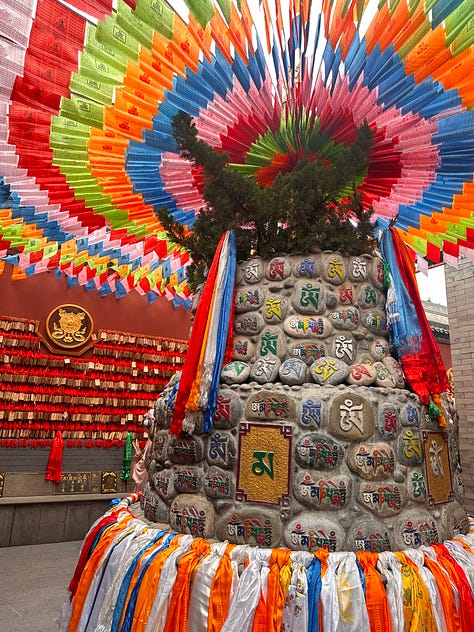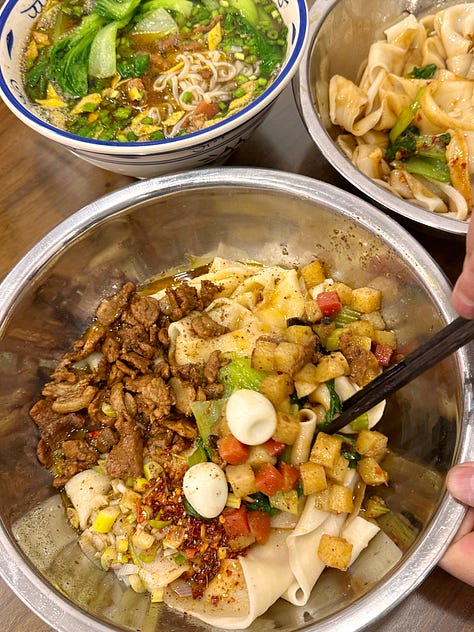Xi’an: A Journey Through the Ancient Heart of China
by Zhang Yue 22kc1506
Xi’an: A Journey Through the Ancient Heart of China
Zhang Yue 22kc1506



Traveling to Xi’an felt like stepping into the pages of a living history book. As the ancient capital of thirteen dynasties, Xi’an holds a weight and presence unlike any other city in China. From the moment I arrived, I felt surrounded by echoes of the past — not just in the architecture, but in the rhythm of life itself.
My first night began with a walk toward the Bell Tower, one of the city’s most iconic landmarks. It stood illuminated in golden light, majestic and calm, right at the heart of modern traffic and neon signs. Nearby, the Drum Tower cast a quiet silhouette under the night sky. Together, they seemed like two sentinels, watching over the pulse of the city for centuries. As I stood there, I imagined the same view a thousand years ago — perhaps with horses, lanterns, and the sounds of a Tang Dynasty evening.
The next morning, I ventured into Guangren Temple, a Tibetan Buddhist sanctuary nestled in a quiet part of the city. The colorful prayer flags fluttered gently above my head, carrying whispered hopes and blessings into the breeze. The temple felt intimate and sacred, a place where history and belief quietly meet. I lingered in front of a spinning prayer wheel, watching locals walk slowly around it, hands clasped and eyes closed. In that moment, I didn’t feel like a tourist — I felt like a part of something ancient and still alive.
For lunch, I couldn’t resist trying one of Xi’an’s most famous dishes: Biangbiang noodles. I found a small, family-run restaurant tucked in a side street. When the bowl arrived, I was struck by its simplicity and richness — the thick, hand-pulled noodles, topped with chili oil, vegetables, and savory meat. The taste was bold, comforting, and unforgettable. It wasn’t just food; it was culture, preserved through flavor.
Later that day, I visited the Terracotta Warriors. Though I had seen countless pictures before, nothing prepared me for the emotion of seeing them in person. I stood face-to-face with a kneeling warrior, carved in meticulous detail over two thousand years ago. His expression was calm, even resolute. I felt the silence of the tomb, the weight of an emperor’s ambition, and the labor of thousands of artisans who brought this army to life. It was humbling, awe-inspiring, and deeply moving.
Xi’an is more than an ancient capital — it’s a city where every brick, every flavor, every glance tells a story. It doesn’t just preserve history; it breathes with it. Walking through Xi’an, I didn’t just witness China’s past — I walked beside it.
